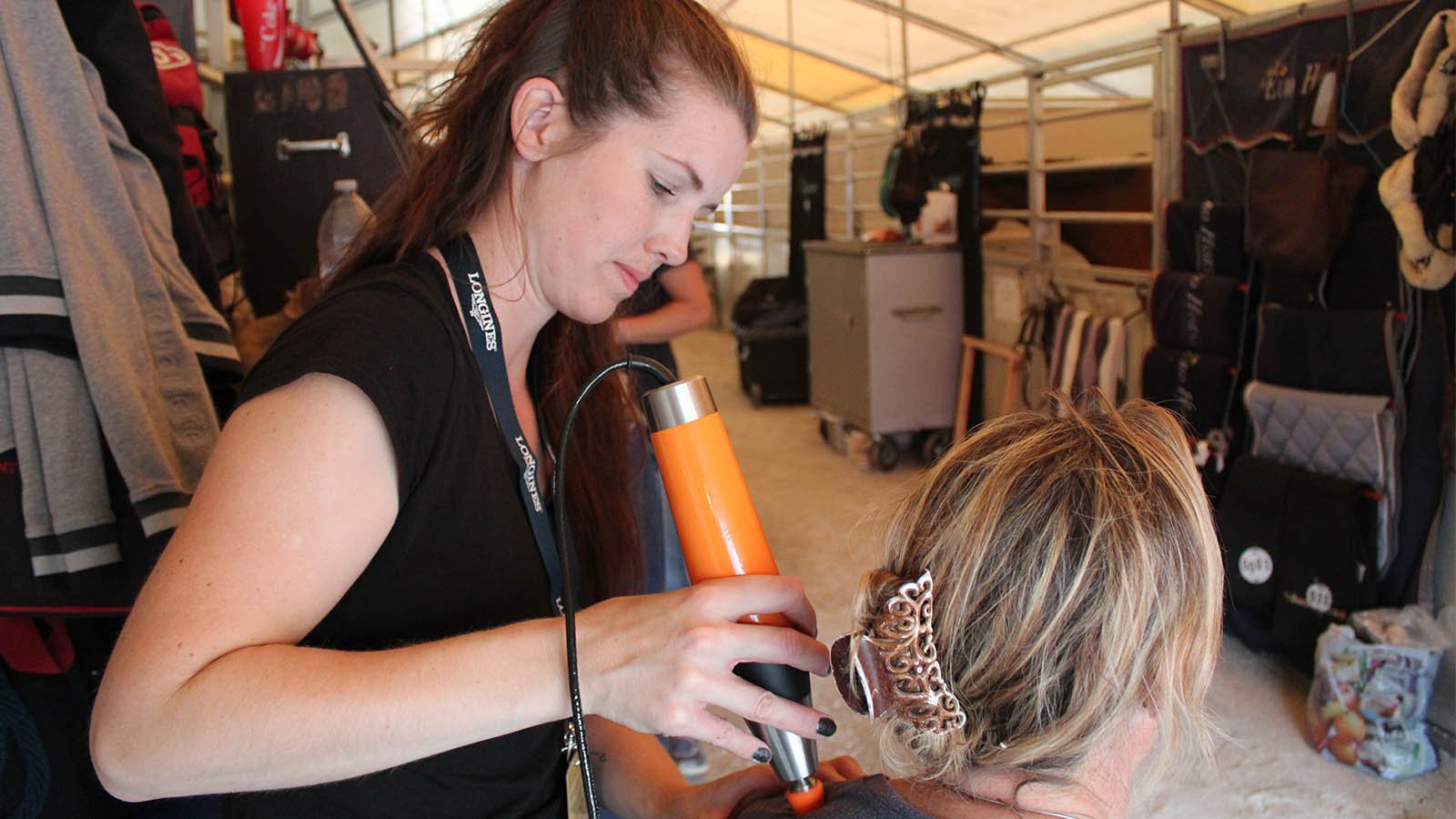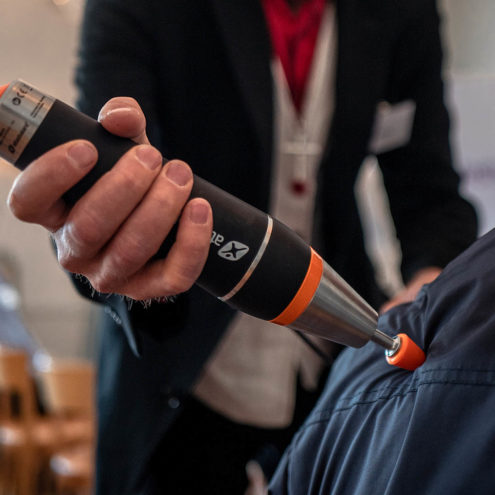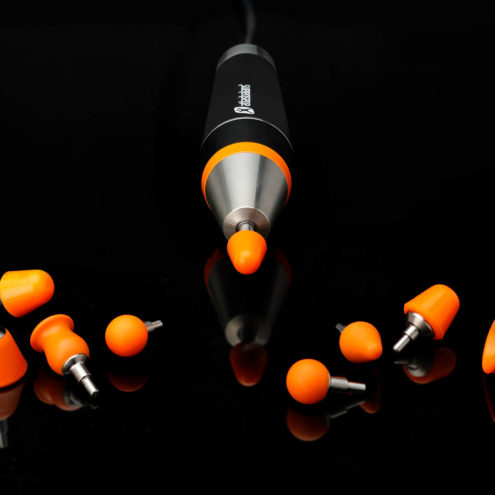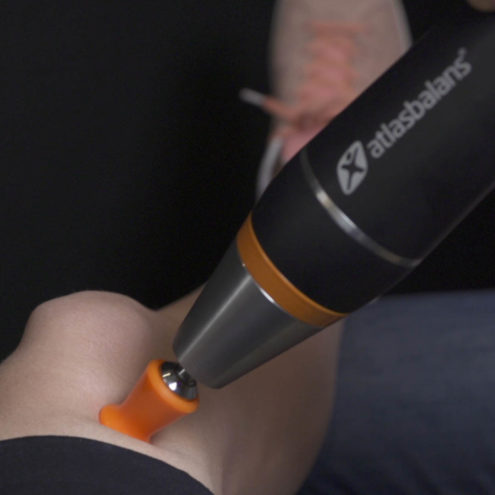Thoughts and insights on treatment from the therapist’s blog

Thoughts and insights on treatment from the therapist’s blog
What is it like to work as a therapist?
Want to know more about how it is working as a therapist and using Swedish Fascia Vibes? We asked therapist Märta Lindqvist, who has been with Atlasbalans since 2015 to share her insights and experiences.
“The more you know, the more you realize that you don’t know”
Humility and Feeling
As a therapist, I believe that some of the most important characteristics are humility, feeling and an ability to put ego aside.
It is easy to be filled up by the feeling of helping. The ego gets in the way of taking credit for the improvement. What we want to achieve is that the client’s body begins to heal itself and we become the one that activates and controls the process. Or control is not the correct word, we do not know how the process will look. To some extent it follows the patterns, we can learn to recognize different symptoms and body types and expect a certain result, but the healing is always guided by so many processes, both mental, physical and circumstantial.
If the ego gets in the way too much I think it will be hard to read the customer and do the treatment in the best possible manner. Then, it is easy to start having opinions that comes out of own experience. That you yourself feel better by a particular treatment or way of living and that applies to the person who turned to us for help.
Many new coming therapists have a very clear and a little simplistic idea of how it should be. They have their education had to learn techniques and theories and are strengthened in their approach. The more you work with different problems and different people, the more humble, I think we will become.
“The more you know, the more you realize that you do not know”
I am grateful for the training I had fifteen years ago. The teachers managed to get our students so (unsure) understanding of how difficult it is with health and treatments, we went out with the feeling of not having understood anything! The feeling was so clear that we (at least I) have always been hungry for more knowledge. Instead of rejecting other methods, it became more and more clear that we all really work with the same thing – but with slightly different methods.
We learned a solid base of anatomy and problems, but then it was open to continue working up experience and through that understanding how it all fits together.
The basis for different treatment techniques are the same. Both mental techniques, therapies and treatments are really the same basis and goals, and if we as therapists can sit on the side and offer our toolbox of methods and then let the customer’s body to determine what is required, it will be best. We do not need to tie ourselves to one method, but we can pick out things that feel right and effective.
Various techniques that seem very different seldom contradict each other, but can be combined. I have always been quite curious and have tried most things. Sometimes I have not thought so very much of it, but I have never rejected anything until I experienced it myself.
That is a pretty good attitude as a client before treatment, to be open to the positive that this therapist / technology can contribute and dare to relax and receive aid unconditionally.
Sometimes you experience a technique that feels wrong or do not provide what you had hoped for. But for another person that may just be what is needed to get a little closer to balance and well-being.
Sometimes the ego can get in the way and the therapist misses something important because they have a preconceived idea of what this customer needs, rather than listening and taking in information.
Sometimes the customer’s attitude can get in the way, they might not even want to get better, might have a preconceived idea of how good it really can be, or do not feel like taking care of the pesky things that are the basis for the pain. Sometimes we are not ready for these changes, or will have to be in even more pain to “get the thumb out ‘and doing things in a new way. We cannot always expect to be fixed, even though we paid for it.
Sometimes we hit just right and the results will be almost miraculous. Sometimes not so much at all, and it is easy to become discouraged and wonder what is wrong.
We will probably just have to work on doing our best, without extinguishing the desire to help and allowing the body to show the way, it usually know exactly what is needed, even if our minds do not always keep up.
My curiosity has at this stage of life led me to the fascia. There is so much exciting new research that challenges what I previously thought, but which also explains so much. I and the others at Atlasbalans are trying to collect as much as possible about this on our side about the fascia. If you are curious about how your body works, it may be worth taking a look?
/Märta
Many can probably question the need for treatments and think that A; it will go away by itself or B; it is the doctor’s task to fix pain
Training vs Treatment
Someone who is injured will probably face the pain in different ways. One person will hit the brakes and try to sleep away the pain and become afraid to move. One will go to the cupboard and find the most effective drug for the pain. Another one will refuse to take tablets and use deep breathing through the painful moments and continue with what is planned.
When they have reached the limits of what one can take maybe there will be calls to the centers or directly to a physiotherapist or therapist. There the physiotherapist will probably treat according to their own approach to pain. Some break the lock ups with a “there we go: you may not be able to walk tomorrow, but you have no lock ups!”. Some say “bend right, bend left, oh that hurt yes”, then puts his hand gently on your shoulder and says, “we should probably not do more today because you are in so much pain.”
Others may without examining you give an exercise routine where you “pull the rubber band and lift your arms toward the ceiling ten times, three times a day” to work away the pain.
The optimal solution is if the physiotherapist / therapist can see each client / patient as a unique creature with unique problems. With a chain of symptoms that can hopefully be traced back to an apparent cause of the pain. The pain is an important indicator that the body needs help. Without pain, you would destroy yourself completely, so we should really feel gratitude that the body tells us something in the early stages so there is time left to make a change.
The cause of the pain can be a combination of different things. You may have a body that lacks essential vitamins and minerals. You may have overloaded your body for a long time reaching the ever famous limit of what your system can take and you “lock up” muscularly.
You may have been working with stiffness for a long time without really being disturbed by it, but then a rare bad day you stretch a little too fast after something and you get acute lumbago. Or you slip on a patch of ice and strain your shoulder and neck.
The reasons are endless, but the cure is actually the same. To dissolve muscle blockages, reduce pain and inflammation and to restore normal movement. If successful it will probably pain and discomfort will likely disappear.
Many, perhaps most, feel good by replenishing their reserves with nutrition. I do not mean more energy or protein, but minerals and easily absorbed vitamins. Our soils are clearly impoverished and cooked food is really poor in these substances. That should be no more discussion on whether we need extra vitamin D in the Nordic region. Although magnesium is a substance that most need extra of.
Otherwise, you may need a balanced addition to not eat a lot of individual substances coming out of step with each other. But vitamin B complex and vitamin C is always good.
So what about training!? That is always good! But sometimes we are actually sick in our body from training too hard in our everyday lives. It is not just at the gym or with the running tights in which we practice. If the shoulder area has been working like a dog on the job for so long that the shoulders go numb and joints bolt of pain, rubber band exercise may not be optimal.
If we walk on hard floors kilometer after kilometer every day maybe we should ignore power walks after work and think about what your body needs.
A hard muscle and Fascia stuck together will exert pressure on the joints who wants to move freely. Sometimes all that is needed is to release some tension to get out of the pain.
We can be relieved of tension in different ways. We can do that by releasing lock ups on our muscles, but in the right way. Strength training with heavy loads and few repetitions can do wonders with locked body parts. But to walk a mile is not likely to get the same effect. We must distinguish between burning workout and exercise to unlock the short muscles and tight fascia.
The therapist or physiotherapist can hopefully learn from the client’s body and give advice on what may fit the best. If the diseased parts are so inflamed that they cannot carry without discomfort that person probably does not need the rubber band, but an effective treatment to get out of their cramps. THEN, as the joints are freer to move, it is good with healthy movement to maintain strength and mobility.
But I think we often forget the importance of stretching, completing the movements and stretching the stiff parts. Think of a cat after a nap. We can get so much more power by regaining full movement compared to burdening tired tight muscles further.
We often get a greater effect from stretching and bending after warming up. Some everyday stretching and bending during the middle of the work day is probably best. Instead of waiting until it is completely locked up.
There is something called post isometric relaxation, which lands somewhat under the same category as the deep wave machine. In which we deceive muscle spindles to release muscle contraction, so that we can get the length of the muscle to stretch a little. A resistance is created in which the short muscles can work and hold for a while and then stretch. Then, hold a little and stretch again.
Another technique that tricks a blocked nervous system is to “push together” the joints of the patient. That is impossible for him to do on himself. For example, the therapist can hold the patient’s arm and push up the shoulder to the ears during full relaxation. When the arm is placed back again, the muscles around the shoulder joint are significantly relaxed. The same goes for the hips and the lower back if one leg is pushed up so that the hip approaches the head.
So without talking too much about the different techniques the summary is not to get locked up in a specific template. Bodies are different, depending on what we do during the day, what body type we have and our attitude, different levels of training and rest is suitable.
Many can probably question the need for treatments and think that A; it will go away by itself or B; it is the doctor’s task to fix pain.
I and many others have the opinion that as long as we live lives that are far from balanced, the need for help and therapies will remain. It has been existent and developed in many different branches, all designed to help people out of discomfort and feeling of ill health, not sickness.
Sedentary, stress and a diet that does more ill than it builds us up: all combine to the body developing inflammation, pain and reduced function. Since our procedures and work allows us to be balanced we feel good anyway, but it can be difficult to maintain that state for a lifetime.
Sometimes you need a little help to keep the important movement and flow of energy in the body.
Instead of waiting until an unmanageable state of pain or movement disorder occurs, we may have to accept that some of us need the maintenance of a therapist we feel comfortable with, to keep the feeling of good health.
Now I’m going out and roll an ensilage bale to the pasture, best kind of explosive strength training that does not require a gym membership, and perhaps stretch the front of the thigh after sitting at the computer for a while.
/Märta









